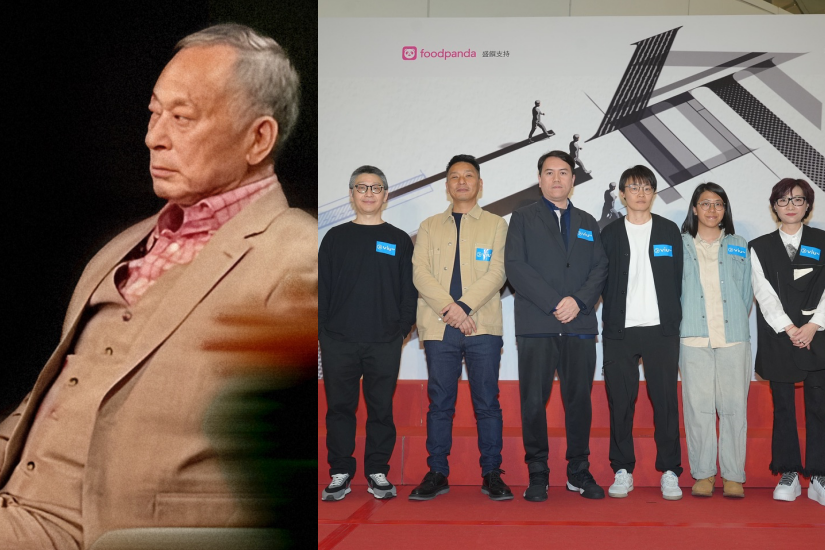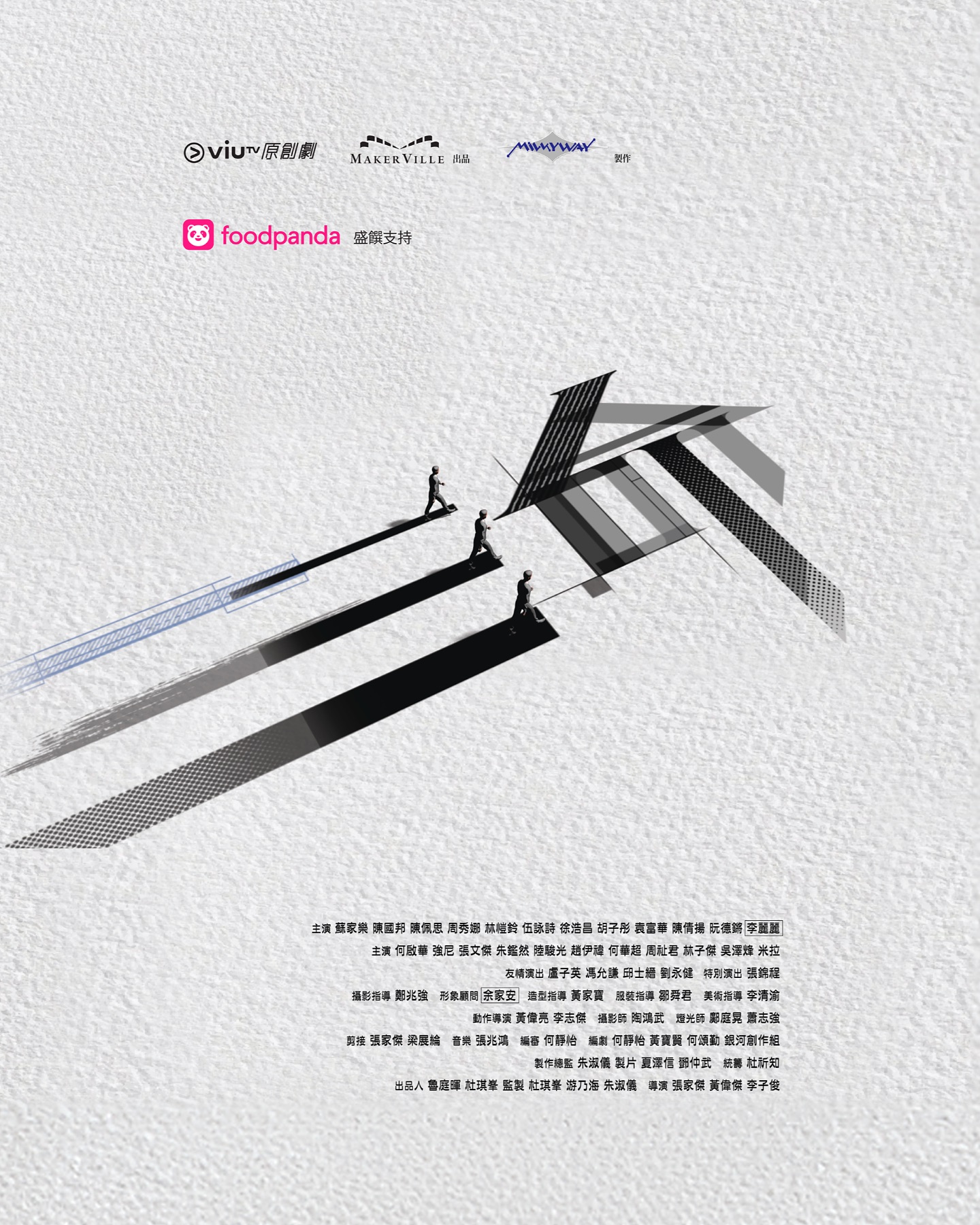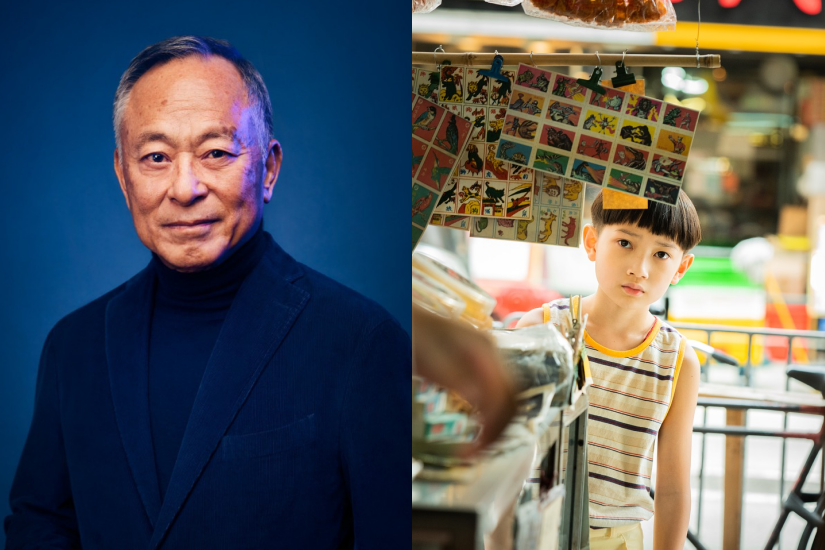The brand new ViuTV drama “Three Lives,” produced by internationally renowned director Johnnie To, officially premiered yesterday (March 31, 2025). This marks an important milestone for To, as it is his return to television production after 36 years. The show brings together a stellar team from Milkyway Image, including Yau Naai-Hoi and Julia Chu as co-producers, as well as a director team honored with awards at the Hong Kong Film Awards, creating a Hong Kong television drama with a distinctly cinematic quality.
What makes “Three Lives” so special and appealing? Here are four key highlights that will help you immerse yourself in the artistic world of Johnnie To while watching the show!
“Three Lives” Story Synopsis
This drama centers around the theme of “fate” and presents a profound story about choices and destinies through a unique three-line narrative structure.
“The Three Fates” begins in 1960s Hong Kong, telling the story of the protagonist Lok Cheuk-sun, who shows a passion for comics from a young age. At the age of sixteen, his comic creations circulate within the school but are tampered with by a mysterious figure. In the quest for the truth, he is led to confront three distinct events, each presenting him with a different choice, leading to entirely different lives: one path leads to a stable career as a civil servant, another to the pursuit of his dream as a comic artist, and the third into the underworld.
However, the story stretches from the 1960s to the present, spanning nearly sixty years and showcasing the changes in Hong Kong society. In each era, Lok Chik-sun faces different life choices and challenges, all of which contain profound reflections on dreams, responsibilities, and human nature. The drama, through its delicate scene composition and precise character portrayals, presents a unique aesthetic and visual style characteristic of Johnnie To.
“The Three Lives” consists of 12 episodes, each lasting about an hour, airing on ViuTV Channel 99 from Monday to Friday, from 9:30 PM to 10:30 PM.
Four must-see highlights:
1. A cinematic visual experience crafted by the team of Johnnie To.

“Three Lives” is undoubtedly a successful attempt by Wong Kar-wai’s team to bring cinematic aesthetics into television dramas. As a renowned director from Hong Kong, Wong Kar-wai served as an assistant director at TVB in his early years and participated in the production of many classic television dramas, including “The Legend of the Condor Heroes,” “The Legend of the Deer and the Cauldron,” and others. It wasn’t until after 1986 that he shifted his focus to filmmaking, launching a series of internationally acclaimed works.
“Three Lives” is a joint production by MakerVille and Galaxy International Pictures, not only featuring the direct supervision of director Johnnie To but also bringing together three accomplished directors: Wong Wai-Kit, Cheung Ka-Hei, and Lee Tsz-Kwan, who have each won the Best Director award at the Hong Kong Film Awards, the Best Director award from the Hong Kong Film Critics Society, and received a nomination for the Best New Director at the Hong Kong Film Awards, respectively. The writing team is led by Ho Ching-Yee, a recipient of the Best Screenplay award from the Hong Kong Film Critics Society, which truly showcases the elite talents within Hong Kong’s film industry, delivering a visual feast for the audience that rivals that of the big screen.
Innovative Attempts at Dual and Triple Narrative Structures
“The greatest highlight of ‘Three Lives’ lies in its unique three-line narrative structure — the series promotes itself with the tagline, ‘One body, two souls, already inseparable; one life, three destinies, even more intense!’ Through a crucial decision point during the protagonist’s teenage years, the story branches into three distinct trajectories. In fact, this ‘parallel universe’ narrative technique is extremely rare in Hong Kong dramas, offering viewers a completely new viewing experience.”
What makes it even more special is that this narrative structure is not just a formal innovation, but also a profound exploration of the philosophical proposition of “how choices affect fate.”
The three versions of the protagonist, Luo Zexin, head down completely different paths in life—becoming a civil servant, a comic artist, and a gangster leader. Through the intertwining of these three parallel lines, the audience can witness how the same person may present entirely different facets under varying circumstances and choices, prompting deep reflection on fate and free will.
Three, the superb performances of a talented cast of actors.
“Three Lives” brings together a talented cast, with Su Jia Le portraying the adult version of Luo Ze Xin, alongside actors such as Chen Guo Bang, Wu Yong Shi, Lin Kai Ling, Zhou Xiu Na, Yuan Fu Hua, Hu Zi Tong, He Qi Hua, and Zhang Jin Cheng, who all contribute to a deeply resonant character ensemble. Notably, the story spans several decades, with the lead character Luo Ze Xin being played by different actors at various ages, from the young Wu Ze Feng to the adult Su Jia Le, adding rich layers to the character through this relay-style performance.
In addition, due to the uniqueness of the three-line narrative, the actors need to interpret different states and character changes of the same role across various life trajectories. This presents a high demand for the actors’ performance skills, and the cast of “Three Lives” has undoubtedly risen to this challenge, presenting the audience with rich, multidimensional, and multifaceted character portrayals.
Four, Hidden Easter Eggs — Tribute Elements
The classic heritage and innovation of Galaxy Imaging.
In the two-hour premiere last night, the special arrangement showcased a cinematic rhythm and aesthetics, leading viewers to discover numerous clever tributes to Johnnie To’s previous works in “Three Lives.” These Easter eggs have also become another major highlight of the series.
The drama not only features common themes found in Johnnie To’s films, such as gang elements and police confrontations, but also attentive viewers have noticed several scenes that pay homage to iconic works from Milkyway Image, including “PTU,” “Drug War,” and the “Election” series. In terms of visual style, it inherits the signature aesthetic characteristics of Milkyway Image: the use of cool-toned lighting and shadow, intricate close-ups of characters, a unique capture of urban spaces, and a tight editing rhythm.
“The Triad” Dongguan Boy’s Classic Hurdle:
In the first episode, there are multiple instances showcasing the character Luo Zexin, played by Wu Zefeng, leaping over roadside railings after school or while crossing the street. This action is a direct homage to the classic hurdle scene featuring Lin Jiadong’s character, the Dongguan boy, in “The Triad.” Although young Luo Zexin’s movements are not as fluid and graceful as the Dongguan boy’s, the intention behind this tribute is very clear, bringing a knowing smile to viewers familiar with Johnnie To’s works.
“The Gangster” Kidnapping Scene in the Abandoned House:
In the drama, the character Ah Long, played by Hu Zi Tong, is forced to “disappear” under the gang’s arrangements after accidentally killing a rival. The scene where he drinks and bids farewell with Lok Chak Sun in a corner of the abandoned house is actually filmed at the location where Siu Yan Ming (played by Law Wing Cheung) is kidnapped and where the solicitor Su (played by Cheung Siu Fai) comes to pay a hefty ransom for the person. Although the scenes in “The Gangster” are quite dark, the high recognition of the setup, such as the firewood stove pit, allows veteran movie fans to recognize it at a glance.
“The Judo Dragon and Tiger List” Kite Stuck in the Tree Scene:
In “Three Lives,” the kite serves as an essential symbol of the protagonist’s growth and a key element in the unfolding of his three fateful journeys. In one scene, Luo Zexin chases a runaway kite until he sees it stuck in a large tree by the roadside. The image of this red kite caught on an orange pole clearly pays homage to the classic moment in “The Judo Dragon and Tiger List” where Louis Koo, Aaron Kwok, and Charmaine Sheh retrieve a red balloon while riding on horseback. This Easter egg has been referred to by many film critics as the “most recognizable” homage element.
“Stalk” Deadly Fish Hook:
In the scene where Lok Chak-sin and Ah Lung arrive at the fish pen, Lok Chak-sin accidentally causes the death of a giant man when he tries to save his friend, leading to the man being pierced in the back of the head by a massive fish hook. This moment is a direct homage to the film “Stalk,” directed by producer Yau Nai-hai in his directorial debut. In the ending of that film, the character played by Tony Leung, Shan Ge, meets his demise when he accidentally crashes into a giant iron hook hanging at a shipyard while evading police capture, severing his aorta. The visual similarity between these two scenes is strikingly high and cleverly echoes the iconic ending of “Stalk.”
Notably, “The Three Fates” has a subtle narrative connection with the film “The Murder Case,” produced by Johnnie To in 2023, resonating in theme and the concept of fate. These homage elements not only serve as a retrospective of Johnnie To’s cinematic career but also continue and innovate the classic Hong Kong crime genre tradition in the television medium, providing seasoned film enthusiasts with a visual feast of hidden gems while showcasing the unique aesthetic tradition of Hong Kong cinema to a new generation of viewers.

“Three Lives” is not only a work that explores fate and choices, but also an innovative attempt by Johnnie To to redefine the television drama format, opening up new possibilities for Hong Kong TV dramas. Whether you’re a fan of Johnnie To, a lover of Hong Kong dramas, or an audience who enjoys deep storylines, this television series, crafted by an award-winning team, is undoubtedly one of the must-see films and television works of 2025!


